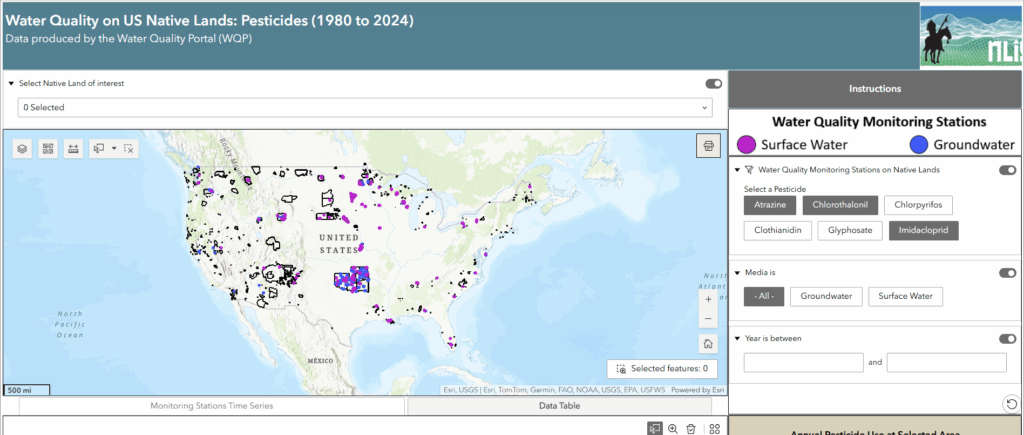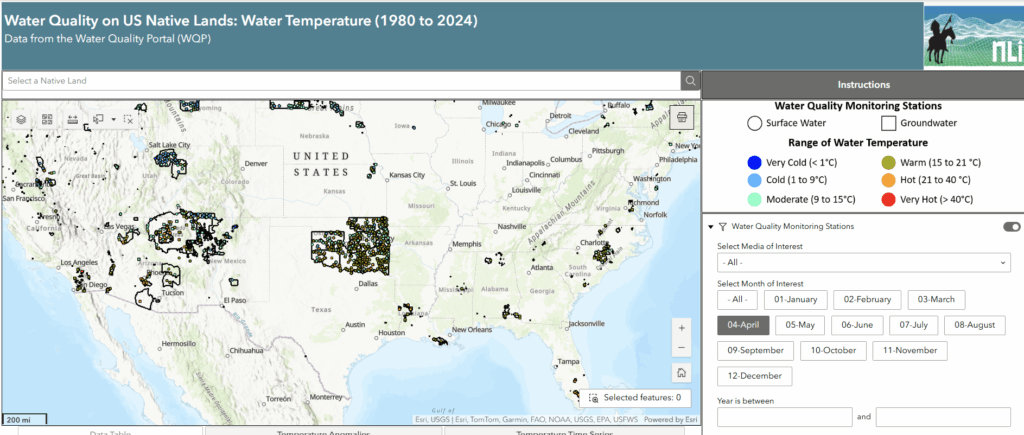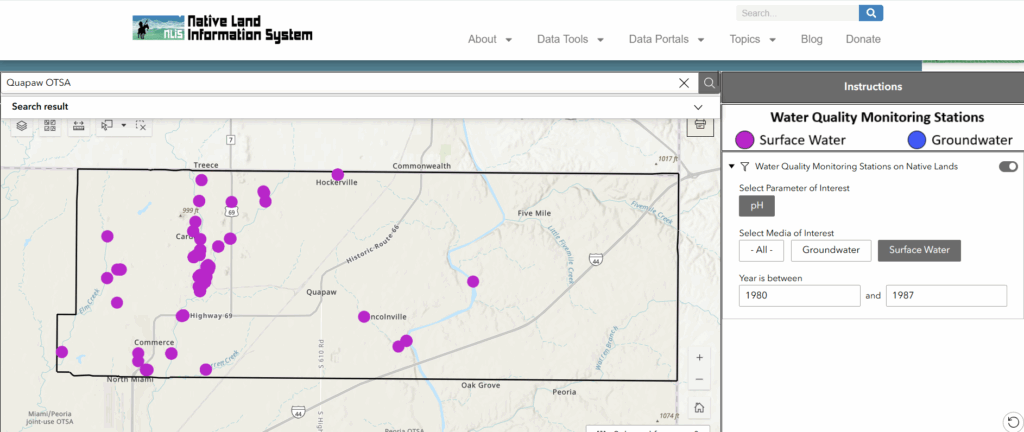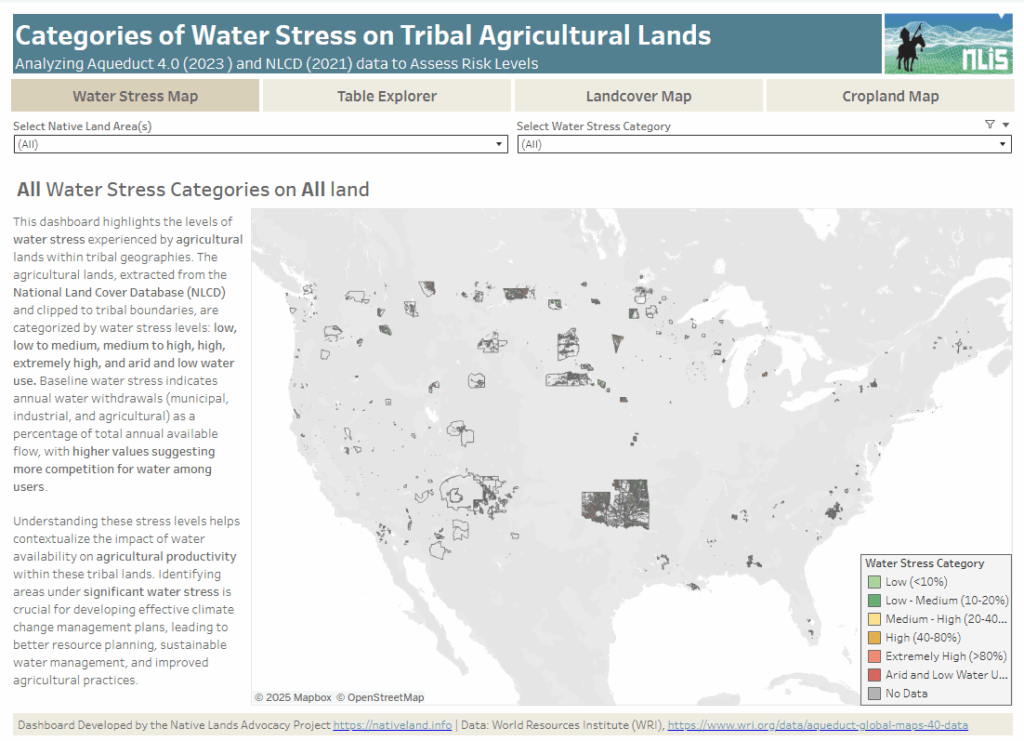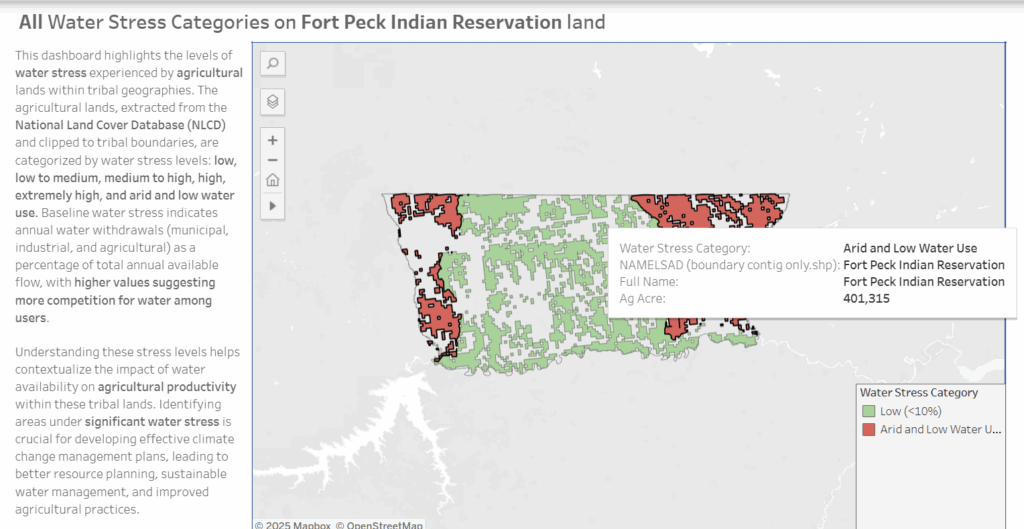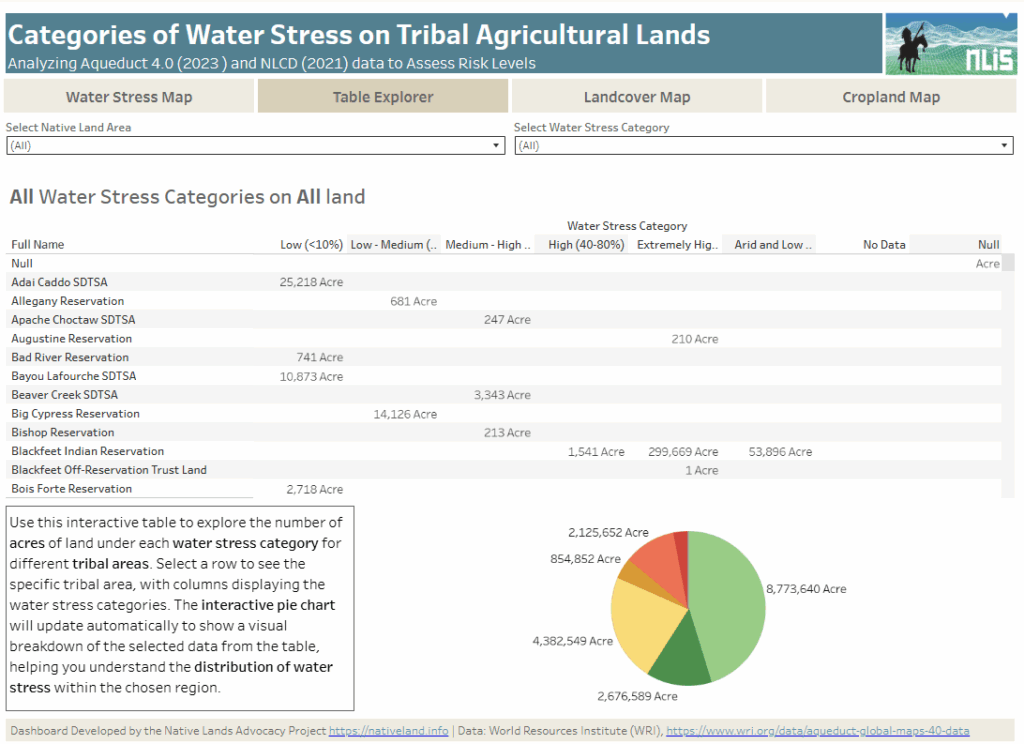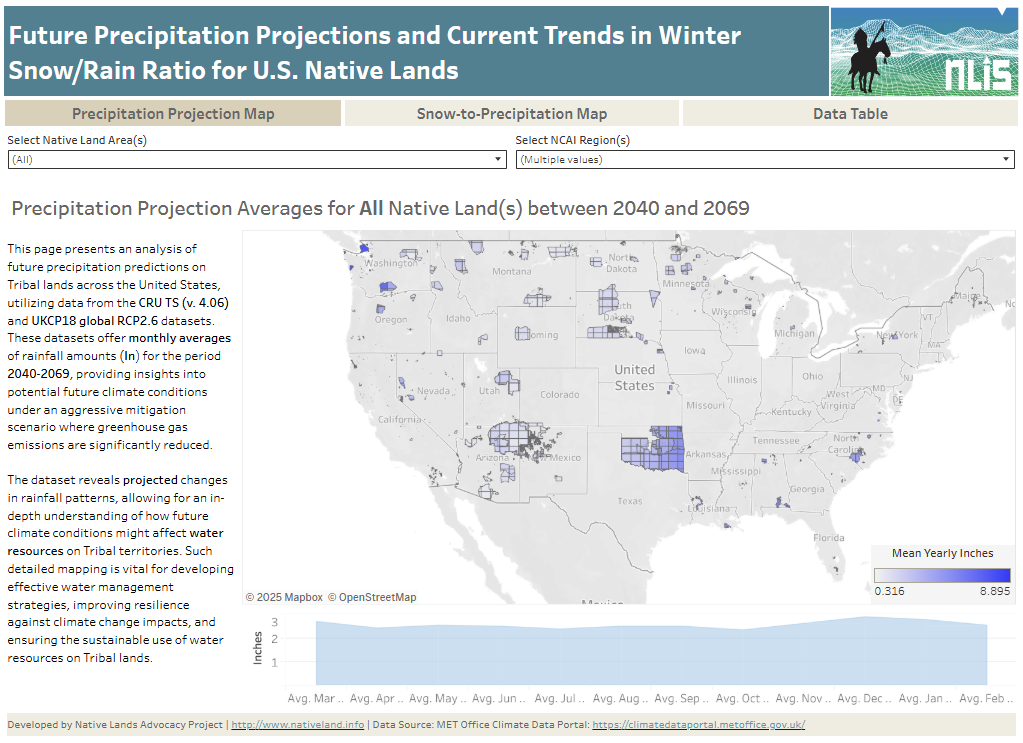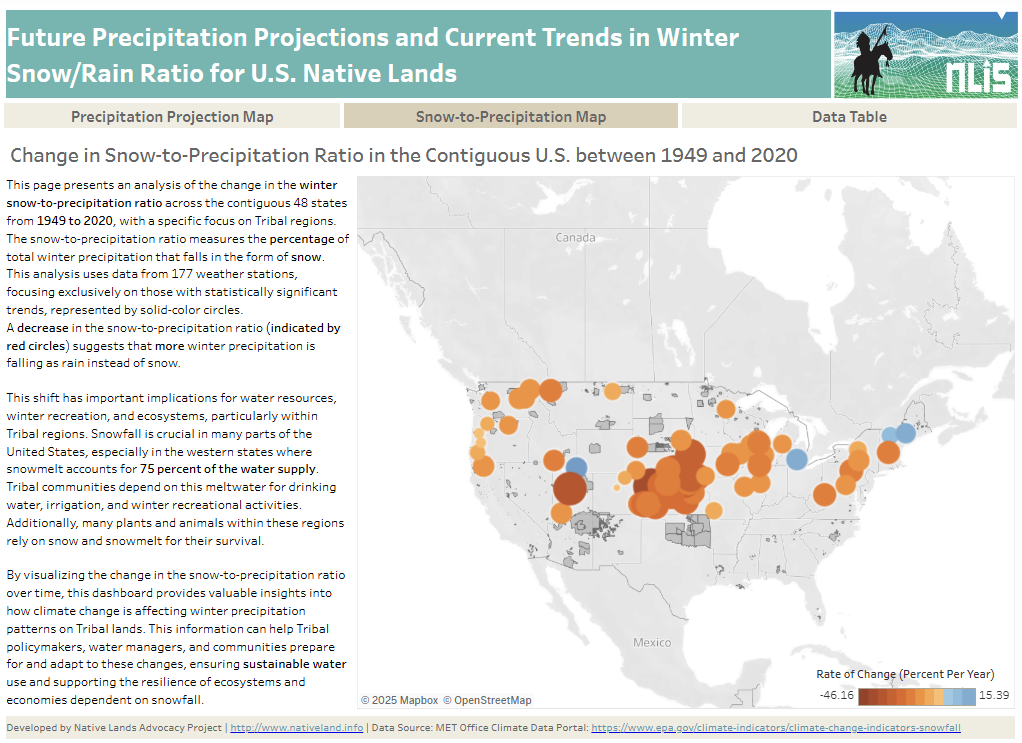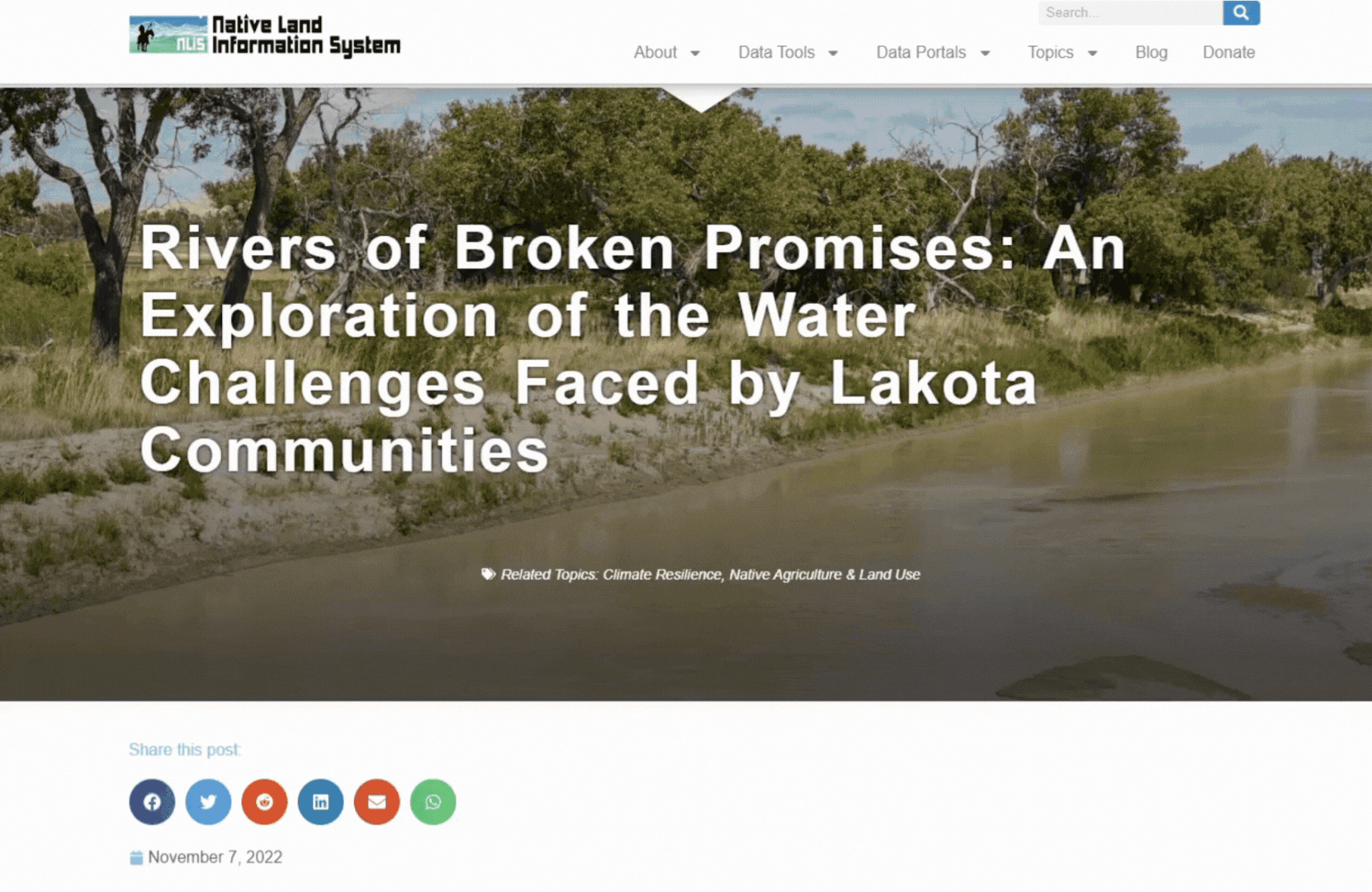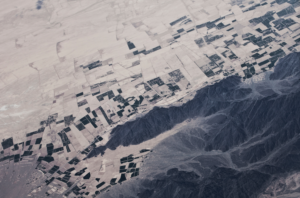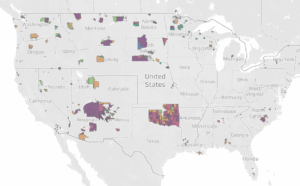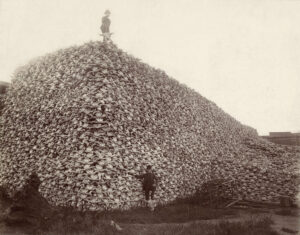The Native Land Information System (NLIS) is home to over 120 public, free data tools and resources that were created to support tribal communities in developing climate-smart land management strategies. We are excited to share some of our new water data tools with you, as well as reintroduce you to some of our earlier water-related resources.
Our GIS team recently created three new interactive maps that provide valuable insights for effective water resource management and climate adaptation for Native lands. Let’s take a look at these new tools!
Use the outline below to explore the water data tools you’re interested in learning more about.
Water Quality Viewer - Pesticides
Our Water Quality Viewer – Pesticides map provides users with a comprehensive analysis of pesticide concentrations in the surface waters and groundwater on U.S. Native lands. The data is sourced from the Water Quality Portal (WQP) along with estimates of agricultural pesticide usage from the United States Geological Survey (USGS). The combination of these datasets with tribal land geographies provides users with the unique ability to gain a deeper understanding of pesticide concentrations and usage on Native lands.
You can filter your results according to the U.S. Native land area you want to focus on, as well as the time frame from which the data was collected. There are also six pesticides to choose from, allowing you to refine your search and gather data most relevant to your tribes’ areas of concern.
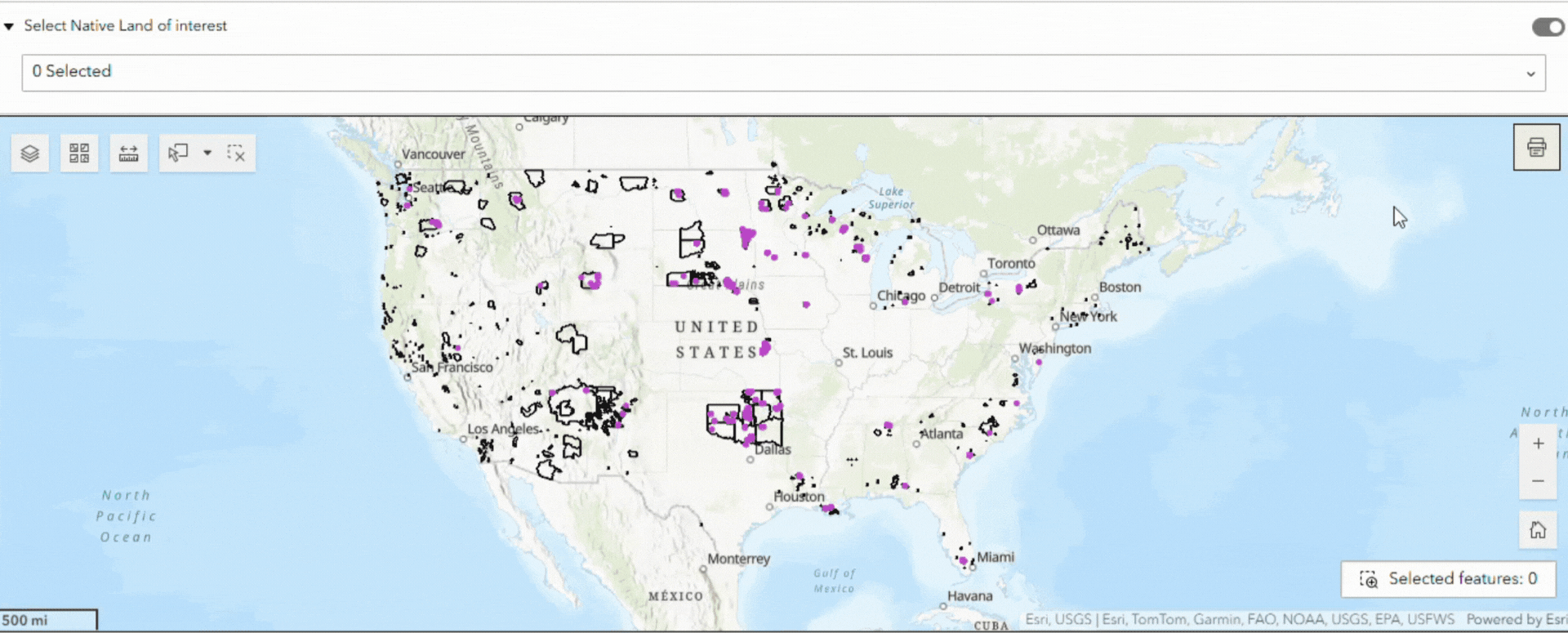
Water Quality Viewer - Temperature
The Water Quality Viewer – Temperature map displays water temperature data from water monitoring stations across U.S. Native lands. This tool allows users to explore critical temperature indicators that influence aquatic ecosystems, which is vital to tribes and their conservation and land-planning efforts.
Water temperature plays a significant role in maintaining the overall health of aquatic ecosystems. A number of factors—metabolic rates, reproduction, nutrient availability, and so on—can be negatively impacted by even small fluctuations in water temperature. This water quality viewer data is essential for tribes to effectively monitor the quality of their water systems and respond with climate-smart solutions.
Our upcoming storymap–Indigenous Efforts to Protect & Restore Water Systems–showcases the utility of the Water Quality Viewer – Temperature tool by isolating specific data points we found for the Rocky Boy’s Reservation (Chippewa Cree).
And stay tuned for our upcoming storymap to see more examples of tools like this being used to assess water health.
Water Quality Viewer - pH & Hypoxia
The Water Quality Viewer – pH & Hypoxia map provides a comprehensive analysis of pH and hypoxia (i.e. dissolved oxygen levels) in surface waters and groundwater on U.S. Native lands.
Both pH and hypoxia are key factors in determining the overall health of aquatic ecosystems, and it is necessary that tribes have access to data relating to these key factors to formulate and sustain water protective efforts. In our upcoming storymap we discuss the case of Tar Creek—its contamination and the efforts of Native Water Protectors to protect it. Using this data tool, we were able to examine a number of data points from Tar Creek over the years and showcase the utility that this viewer offers to tribes.
At NLAP, our mission is to provide tribes with the resources they need to govern and care for their communities and people. The Water Quality Viewers are intended to bridge the gap between Native Nations and the data they require to exercise their inherent sovereignty.
And stay tuned for our upcoming storymap to see more examples of tools like this being used to assess water health.
In addition to these new viewers, we have several other water data tools that analyze different aspects of water health on U.S. Native lands. Use the outline below to explore the water data tools you’re interested in learning more about.
Agricultural Water Stress on Native Lands
The Agricultural Water Stress on Native Lands dashboard allows tribes to see which land areas are experiencing different levels of water stress (ranging from low to extremely high). This information is important for tribes and their ability to develop effective water management strategies. In areas with high competition for water resources, this dashboard could help tribal officials make informed decisions concerning what agricultural activities are sustainable in conjunction with their community’s specific needs.
This water data tool allows users to select individual tribal boundaries and examine data specific to that land area.
You can also switch to the Table Explorer to see the acres of land under each water stress category for different tribes. These insights aim to support better resource management and land-planning for Native Nations as they address challenges related to water scarcity and land use.
Precipitation Projections and Winter Trends on U.S. Native Lands
Our Precipitation Projections and Winter Trends on U.S. Native Lands dashboard looks at future precipitation predictions and historical snow-to-precipitation ratio changes for the purpose of helping tribes understand precipitation patterns for their lands and how they impact their water resources and ecosystems.
The first map that the dashboard displays is the Precipitation Projection Map, which derives its data from the CRU TS (v. 4. 06) and UKCP18 global RCP2.6 datasets. Users can filter their results based on the Native land areas or the NCAI regions they wish to examine. This tool is designed to reveal projected changes in rainfall patterns that can help tribes understand how future climate conditions may affect their water resources.
The second map is our Snow-to-Precipitation Map, which analyzes the change in the winter snow-to-precipitation ratio across the conterminious U.S. from 1949 to 2020. This dataset is drawn from 177 weather stations and their measurements of the percentage of total winter precipitation that falls as snow. This information is especially important for Tribal policymakers, water resource managers, and communities in general as they adapt to climate change impacts.
Rivers of Broken Promises: An Exploration of the Water Challenges Faced by Lakota Communities
At NLAP, we recognize that context is essential to understanding the significance of datasets for Native communities, as well for appreciating the reality that the data represents. Our blog posts and storymaps are designed to provide users with this context while also highlighting the functionality of our data tools.
In 2022, we published Rivers of Broken Promises: An Exploration of the Water Challenges Faced by Lakota Communities, guest-authored by Aliyah Keuthan. This blog post analyzes the challenges faced by Native communities trying to access clean water and offers historical context for challenges faced by the Lakota people of the Pine Ridge, Rosebud, and Lower Brule Sioux reservations in their struggle to access potable water and obtain funding for water distribution and treatment systems.
This post exemplifies how the health of water systems and Native communities are intricately connected to settler colonial agricultural practices and policies, utilizing our USDA Census of Agriculture for American Indian Reservations dashboard to highlight the inequity that stems from said practices and policies.
We also invite you to explore our other publications on the Native Lands Blog and learn more about our efforts to contextualize the data housed on the NLIS.
If you enjoyed learning about our water data tools, keep an eye out for our upcoming storymap: Indigenous Efforts to Protect & Restore Water Systems.
Subscribe to our newsletter at the bottom of this page and follow us on social media to keep up with our work!
Authors
Written by Mauryn Morfitt

